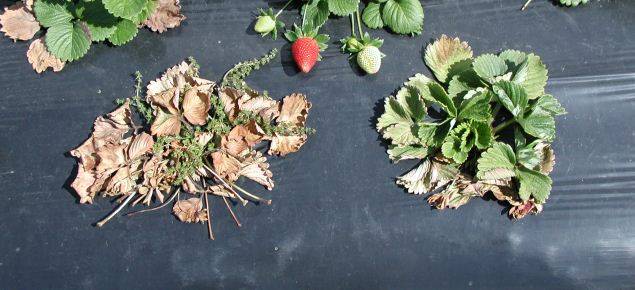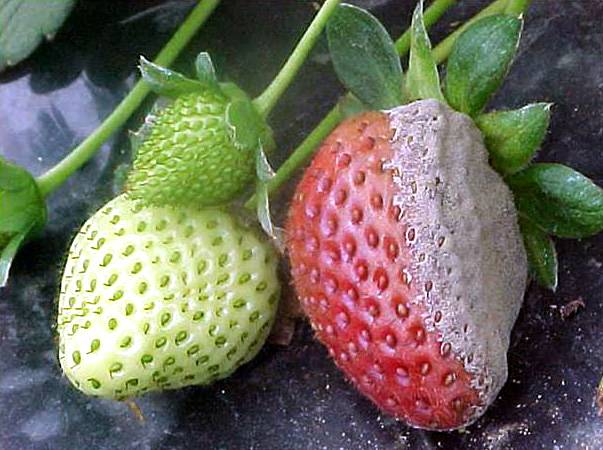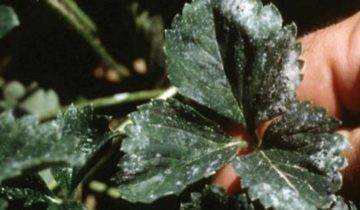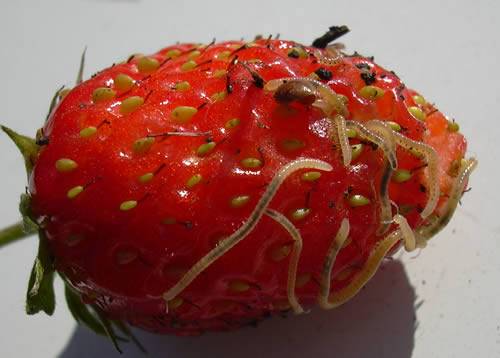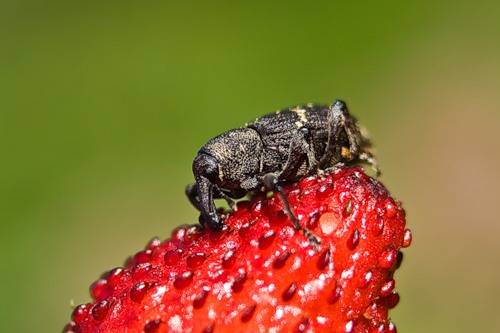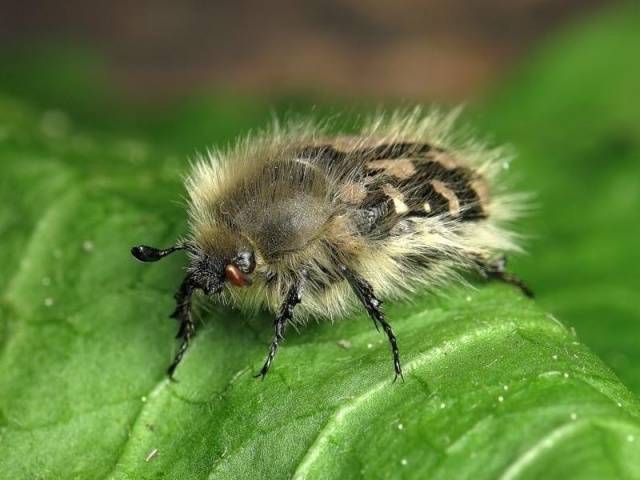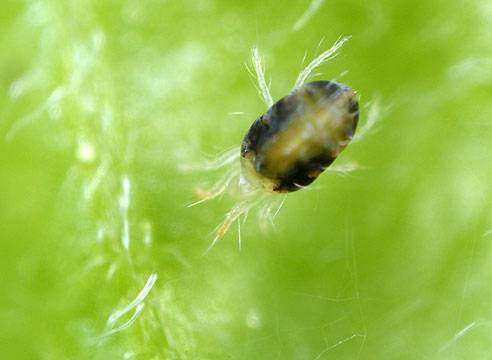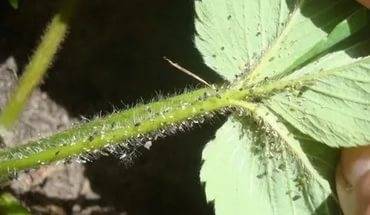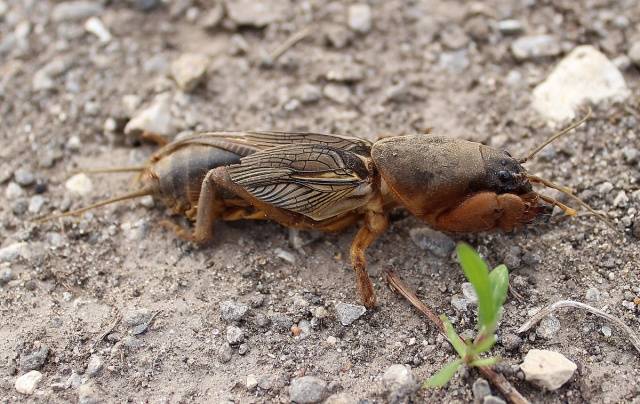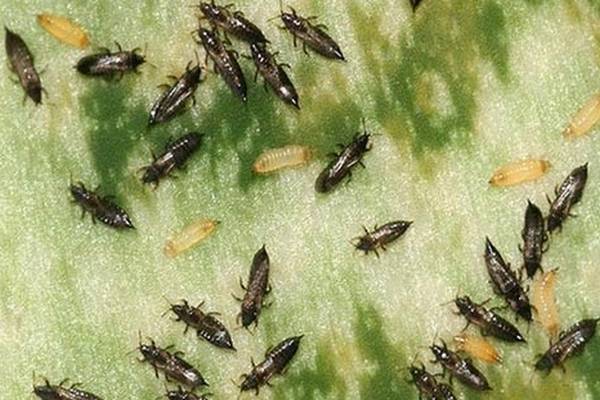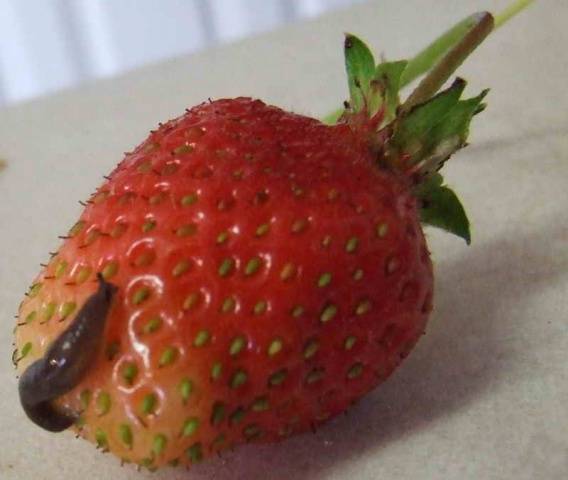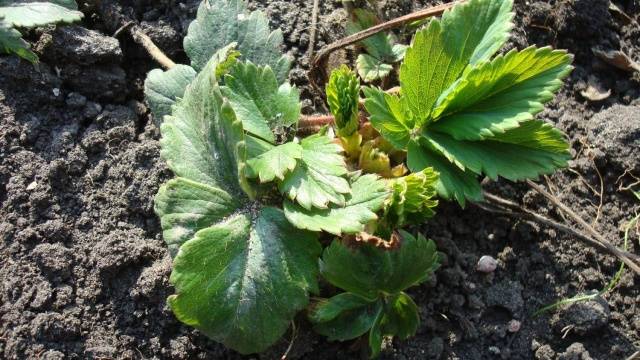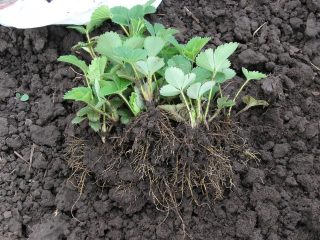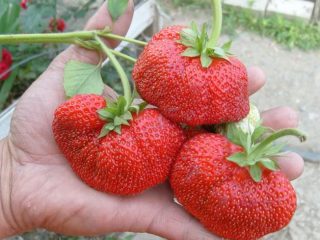Strawberries require careful maintenance. Failure to comply with the agrotechnical conditions of its cultivation threatens the emergence of various diseases. Unfortunately, not all of them are treatable - you have to destroy the affected berry bushes, and sometimes entire beds. Pests also cause great damage to plants. Although it is difficult to completely protect the plantations, treating strawberries in the fall from pests and diseases will significantly reduce crop losses for the next season. Gardeners do not always pay attention to signs of damage to strawberry bushes by various infections, and its delicate berries and leaves are to the taste of many pests. They are often the reason for the loss of most of the crop. It is important to know about them, and proper care and timely preventive work will help protect strawberry bushes from diseases.
Strawberry diseases
Fusarium and late blight wilting
Strawberries show signs of fusarium and late blight wilting... The disease is fungal, manifested by the brown color of the leaves and petioles, the edges of the leaf blades bend upward. Fruiting decreases, and with the dying off of the fibrous roots, the plant dies.
The disease cannot be cured, the affected strawberry bushes have to be destroyed, so it is better to try to prevent it by using the following measures:
- take seedlings in proven nurseries;
- every four years, transplant the bushes of garden strawberries to a new place, otherwise their roots no longer receive a sufficient amount of nutrients and are easily exposed to various infections;
- seedlings are less susceptible to disease if planted in late August or September;
- it is useful to treat the roots of strawberries with a growth stimulant before planting, and before planting, treat the soil from fungi with an iodine solution.
The affected bushes are clearly visible in the photo.
Gray rot
The disease is easily detected by a fluffy bloom on brownish spots that appear on strawberries. The fungal infection usually occurs during the period of frequent rains and very quickly spreads to neighboring berries, and then affects the entire bush. Collect and destroy the stained fruit. However, if the leaves and petioles are damaged, the entire strawberry bush is subject to destruction.
Prevention of gray rot will help:
- the use of agrofilm in the beds - they will not grow under it weeds, and the fruits will not touch the ground;
- even before flowering, strawberries need to be sprayed with 2-3% Bordeaux liquid or iodine solution - 10 drops per bucket of water;
- seedlings should not be planted too densely;
- you can cut off part of the leaves on strawberry bushes - then they will be well ventilated and ripen faster;
- growing under white agrofibre will reduce the likelihood of disease.
White or brown spotting
Fungal disease in strawberry beds, which is spread by spores. Its appearance is characterized by small brown spots on the leaves of strawberry seedlings, which gradually merge, covering the entire leaf. It turns yellow and then dies off. The infection quickly affects neighboring bushes.
In order to cope with it, you need:
- spray the beds and bushes of strawberries with a 4% solution of Bordeaux liquid, including leaves;
- before processing the strawberries, it is necessary to cut off all the dried leaves and burn them, since mushroom spores winter in them, then water the bush under the root with an iodine solution;
- the choice of high-quality seedlings and caring for them is of great importance.
Powdery mildew
Symptoms of the disease are expressed by rolling the leaves into a tube. At the same time, their color changes from green to purple. A white bloom appears on top of the leaves. The disease disrupts the pollination process, as a result of which deformed fruits are formed, also covered with bloom. The taste of strawberries also changes. The disease can be seen in the photo.
For the prevention of strawberries from powdery mildew and its treatment of the garden process solution of copper sulfate. Spraying with a solution of iodine in water helps a lot. Its effectiveness increases with the addition of milk. Regular treatment of strawberries from diseases and pests with this tool reduces the likelihood of their occurrence.
The video shows how to process strawberry bushes.
Pests
Nematode
One of the most common pests of strawberries is the nematode. Most often, it affects young strawberry bushes, laying eggs on its leaves and in the buds. The hatched larvae turn into adults in two weeks - small white worms up to one millimeter long. Infected strawberry bushes can be identified by some signs:
- reddening of the petioles of the leaves;
- deformation of the peduncle;
- red spots on the leaf blade;
- too small berries or their complete absence.
Anti-nematode treatment
To exclude the appearance of this pest, you need to select healthy seedlings, and before planting it is necessary to disinfect it by keeping the strawberry bushes for a quarter of an hour in sufficiently hot water - 45 degrees, and then in cold water. This procedure will harden the plants, increase their resistance to adverse factors and activate rapid growth and development. It is also good to water the beds with iodine solution.
Autumn activities will be a good preventive measure in strawberry care:
- cleaning strawberry beds from diseased plants and weeds and their destruction;
- digging the beds with the introduction of slaked lime or processing them with iron vitriol.
Weevil
A small dark gray beetle hibernates in the ground under strawberry leaves, and in May it moves inside the buds, laying eggs in them. It can be clearly seen in the photo.
The hatched larvae eat it from the inside and remain in it in the form of a pupa, which by the middle of summer gives a new generation of pests. They destroy the strawberry pulp, then hide back for the winter.
Weevil control
Effectively help in the fight against the beetle by spraying strawberry bushes with a solution of dry mustard or an infusion of wood ash. A good result is given by processing with an infusion of bitter pepper.
Spraying of beds with strawberry bushes from pests should be carried out before its flowering, when the buds have just appeared. Re-processing is carried out in the summer. You can remove the weevils from the bushes by simply shaking them off onto the spread film. Autumn digging of strawberry beds will be an effective preventive measure.
Strawberry whitefly
A small white butterfly with two pairs of miniature wings feeds on the juice of strawberry leaves and lays eggs on their underside. The larvae stick to the leaves, forming a kind of cocoon. Then adults emerge from them. In one season, the whitefly gives up to four generations, and hibernates in the soil, under the strawberry bushes. An effective means of combating it is the use of mulch film in the beds.
Shaggy bronze
A dangerous pest that infects strawberry bushes in May, during the flowering and fruiting period, is the shaggy bronze - a small black beetle. It eats leaves and twigs, multiplying rapidly. In the fight against it, they use:
- deep loosening and digging of the soil;
- burning raw straw;
- collecting beetles by hand.
Strawberry mite
When a pest appears, the strawberry bushes become smaller, and the leaves wrinkle. Its dimensions are very small. Feeding on cell sap, they multiply rapidly and give up to several generations over the summer. Soon, ticks populate the entire garden bed, and when replanting strawberry bushes, they are transferred to a new one. Wet, warm weather is especially favorable for their reproduction.
Strawberry mite protection includes the following actions:
- in spring, in dry weather, it is necessary to clean the strawberry beds from plant debris and burn them;
- strawberry bushes need to be treated with hot, up to 80 degrees, water, and then fed;
- spraying with colloidal sulfur solution every 14 days;
- it is useful to process all strawberry beds with Bordeaux liquid;
- onion peel infusion effectively destroys strawberry mites, this method should be used several times with an interval of about two weeks;
- at the end of summer, you need to mow the strawberry bushes and burn the collected grass, and water the garden bed and add top dressing to it;
- before planting, you need to arrange a hot bath for the seedlings for a quarter of an hour, and then cool.
Spider mite
A thin cobweb appears on the strawberry bushes, enveloping its leaves. It indicates the appearance of a spider mite, which feeds on the cell sap of the stems and leaves of strawberries. Its growth gradually slows down, fruiting decreases, the bushes die.
At the initial stage of the lesion, treatment of strawberry bushes with an infusion made from a mixture of wormwood and tobacco will be an effective remedy. If this is not enough, you need to treat the beds with karbofos.
Aphids on strawberries
Small insects can be seen immediately, as they cover all parts of the plant. Rapidly multiplying, aphids inhabit all neighboring strawberry bushes, causing enormous damage. When it appears:
- strawberry leaves curl and dry up;
- flowering and fruiting of bushes slows down;
- deformation of the berries occurs.
The pest does not tolerate the smell of garlic, so garlic infusion helps in the fight against it. It is cooked in cold water and aged for several days. It is used to cultivate strawberry bushes and the soil around them. An excellent remedy for aphids is a solution of dry mustard, as usual, with laundry soap.
Medvedka
The pest lays eggs in the ground and hibernates there. Both he and his larvae eat the roots, causing the strawberry bushes to slowly dry out. Medvedka multiplies quickly and causes very large damage to the crop. To protect against it, you need to use all available methods:
- you need to try to lure birds to strawberry beds with the help of feeders;
- to set traps in the beds, bait containers are buried;
- you can lure insects out of the burrow with soapy water.
Thrips tobacco
Small yellow-brown insects feed on the cell sap of strawberry leaves, as a result of which the bushes wither and die. Eggs are laid on the lower leaf plates; five generations hatch over the summer. In winter, thrips hides in the soil under strawberry bushes.
In the fight against the pest, spraying strawberries every week with infusions of dandelion, orange peels or a decoction of chamomile, starting before its flowering, helps.
Slugs
They appear in large numbers in high humidity and eat berries and young leaves on strawberry bushes. The pest hides under the leaves during the day, and hibernates in the soil.
To get rid of slugs will help:
- covering the beds with agrofibre;
- sawdust mulching and wood ash processing;
- spraying with saturated sodium chloride solution.
Ants
Plants with a pronounced smell, such as wormwood, mint, garlic or onions, are suitable for protecting strawberry bushes from these insects. They can be planted between or around the beds. For the treatment of the beds, solutions of ash, mustard, and wormwood are also used.
Other pests
strawberry pests lend themselves well to infusions and decoctions prepared from home remedies. It is worth resorting to chemical remedies if the problem is too advanced. The video will tell you about the process of processing strawberry bushes.
Wireworm is a small worm, it can be removed by treating the leaves with a solution of lime, potassium permanganate or dry mustard.
Snails' favorite delicacy is cornmeal. At the same time, it is destructive for them, which makes it possible to use flour as a protection for strawberry bushes.
To hatch the larvae of silkworm moths, you can use kerosene treatment of strawberry bushes.
To fight the May beetle, you must first of all destroy its larvae, which are hiding in the depths of the dung heaps. They are dug up in the fall so that all the larvae freeze over the winter.
Putting sweet baits around the strawberry beds will help you get rid of annoying wasps.
The bright strawberries and their aromatic scent attract birds too. They will be scared off by several plastic bottles on pegs.
Conclusion
Strawberry diseases and pests are easier to deal with in the early stages. You should regularly inspect the bushes and beds, carry out preventive measures in the fall and spring, remove the affected leaves or bushes in time. With proper care, strawberry beds will delight you with a rich harvest of sweet berries.
